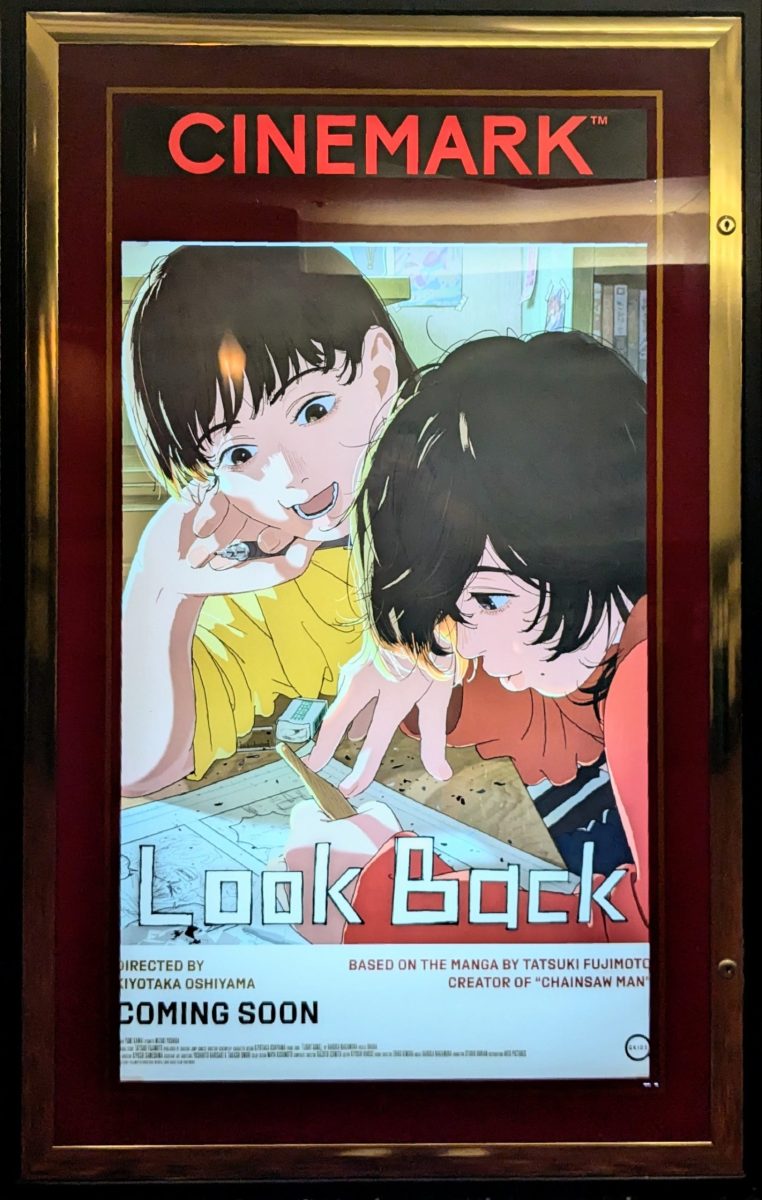“Look Back,” directed by Kiyotaka Oshiyama, delivered a love letter to manga artists in its 58-minute runtime.
The film released in theaters in the United States on Oct. 4, following Fujino’s journey in becoming a manga artist.
Fujino first published her work in her elementary school newspaper, taking pride in her manga strips. Her classmates praised her until a younger classmate by the name of Kyomoto started to publish her work in the newspaper as well. Kyomoto, who remains anonymous, clearly outshines Fujino’s artwork, humbling Fujino and motivating her to become better than her opponent.
The two unexpectedly meet when Fujino is forced to deliver Kyomoto’s diploma to her house. Thus, the two end up agreeing to start creating manga together, sparking a life-long friendship.
Yuumi Kawai makes her acting debut as Fujino and Mizuki Yoshida (Alice in Borderland) plays Kyomoto. Originally based on the manga by Tatsuki Fujimoto who created the famous series “Chainsaw Man,” Fujimoto tells his experience in creating manga through his protagonist in “Look Back.”
The “Look Back” one-shot was published in July of 2021 on Shueisha’s Shonen Jump online platform. The film was adapted by Studio Durian, distributed by GKIDS and released in October with a 100% rating on Rotten Tomatoes.
The film takes a dramatic turn due to an incident that refers to the true events of a mass killing that happened at Kyoto Animation studio in 2019, according to an article published by CNN.
“Look Back,” while focusing on the process of creating manga, heavily deals with the process of grief. The film’s title alludes to the feeling of “what could’ve been” in times of grief and loss.
The film was comedic and tragic, making the audience laugh and gasp. Despite the film’s short runtime, Oshiyama did a fantastic job bringing Fujimoto’s characters to life from the very first minute they appear on screen.
The storytelling through the animation was similar to other GKIDS films such as “My Neighbor Totoro” and “Kiki’s Delivery Service.” The characters expressed their emotions through dramatic facial expressions and body language, sometimes skipping around or screaming at the top of their lungs. The background scenes would follow their emotions: the skies blue and clear in happy moments, or dark and gray in moments of grief.
The most outstanding part about this film is the fact that Oshiyama was able to tell this story, from childhood to adulthood, in 58 minutes. He was able to illustrate the feelings of accomplishment and hitting rock-bottom in pursuing art, the friendship highs and lows between the two girls and the grief process, all while leaving the film on a bittersweet note.
“Look Back,” while kid friendly, is definitely for a more emotionally mature audience. For fans of Studio Ghibli films or coming-of-age stories, “Look Back” might be the exact film you’re looking for.

